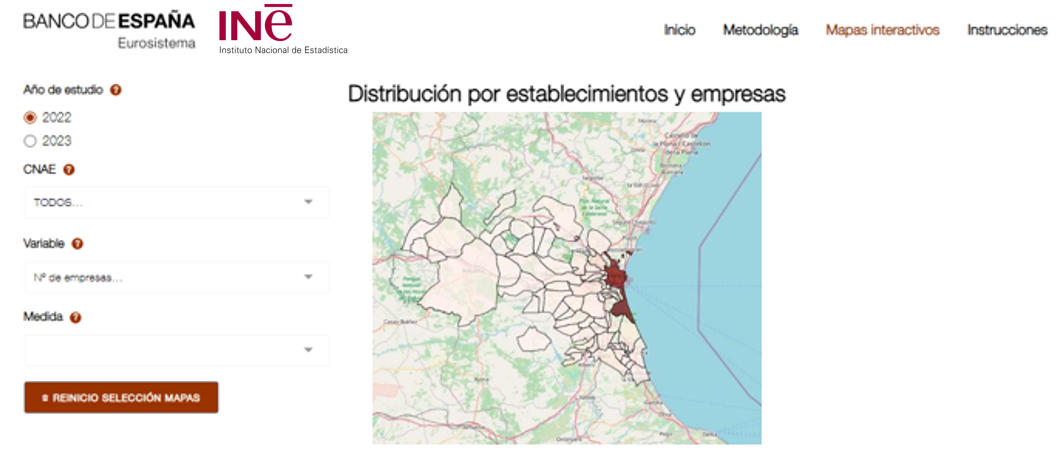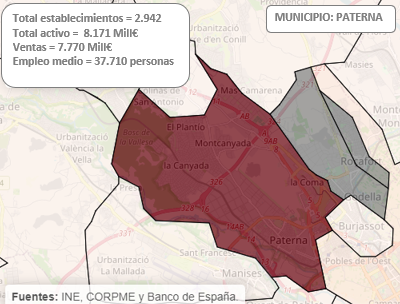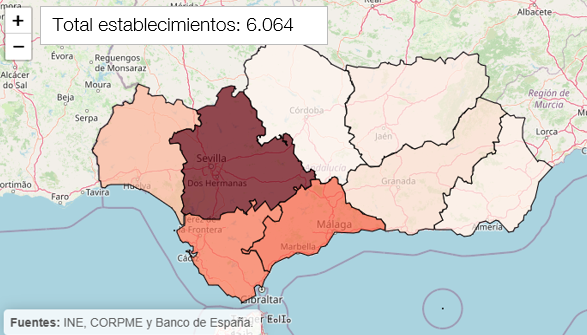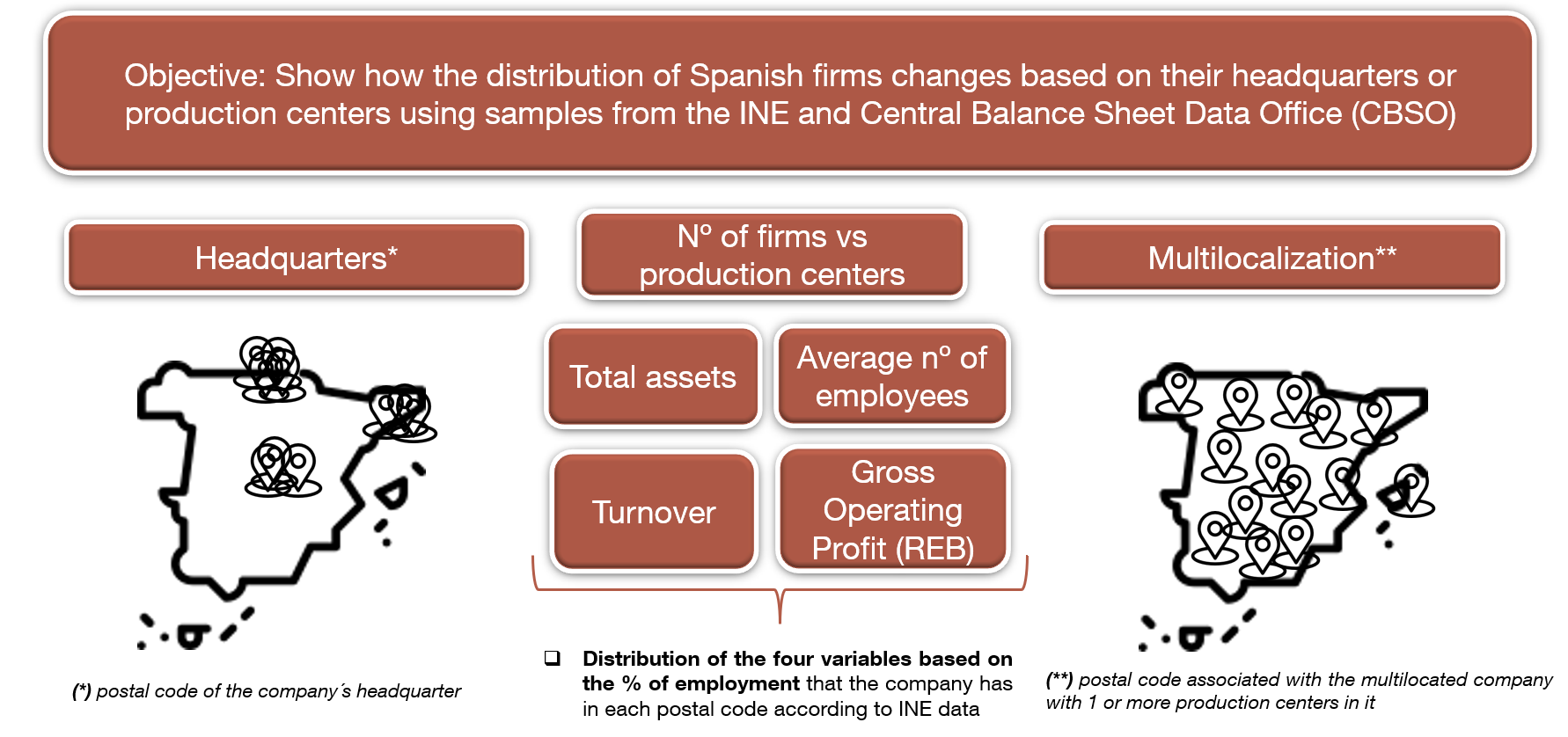A recent example that illustrates the importance of having information by production centers is the natural disaster of the DANA in Valencia. In addition to companies with headquarters in the affected postal codes, the impact also reached others with establishments or production centers there, even if their headquarters were outside the area. Having this tool allows for the evaluation of the potential scope of the phenomenon based on estimates derived from available historical information, in terms of the number of companies, employment, sales, and affected assets, as well as their income generation, for more informed and precise decision-making.
Diagram 2. Screenshot of the ViME tool that allows for the evaluation of the economic impact on non-financial corporations located in areas affected by the DANA

Sources: INE, CORPME and Banco de España
If we analysed the impact of the DANA in a municipality, like Paterna, considering only the historical data available in the annual accounts of companies registered in the municipality, the estimation of the effects of the floods in the locality would be lower than the real impact.
Using the data provided by the ViME tool, we can make a much more accurate calculation of the impact: The 2,022 companies that have their headquarter in that municipality recorded sales of 6,600 million euros in 2023, while the sales of all establishments located in Paterna (which were 2,942, including those registered in other localities) would amount to 7,700 million euros, which is 17% more.
Chart 1. Map of Paterna by establishments

The 113,000 companies with headquarters in the municipality of Madrid operate through production centers or establishments in various parts of the national territory. In the specific case of Andalusia, these data indicate that there are more than 6,000 establishments of companies with headquarters in Madrid, with assets and sales close to 60,000 and 41,000 million euros, respectively3.
The new ViME viewer allows access to these data at province level and enables comparative analyses: For example, we can observe in the attached maps how different productive specializations generate differences in the concentration of assets and sales of establishments of Madrid-based companies among the different provinces of the Autonomous Community of Andalusia.
Chart 2. Distribution of sales and total assets of companies with headquarters in the municipality of Madrid in the Autonomous Community of Andalusia


3Information obtained from their annual accounts, filed with the Commercial Registries These estimates are based on information from 2023.
The data sources used to build this statistical product are the Central Business Register (DIRCE) of the INE and the annual accounts of companies available in the Central Balance Sheet Data Office of the Banco de España (whose main ultimate data source is the College of Property and Commercial Registrars of Spain (CORPME)).
Although the information available in DIRCE covers the entire population of non-financial corporations, ViME does not, for two reasons: (i) there are around 320,000 companies for which information is not available, either because they do not file their annual accounts or do so in paper format. Additionally, (ii) there are another 60,000 companies that do not meet the established quality standards of the economic-financial variables selected for this product. The data of approximately one million companies used in ViME will be enriched in successive editions of the product.
ViME reports on the different geographical distribution of four variables (employment, assets, sales, and gross operating profit) of Spanish non-financial corporations (it does not include information on self-employed entrepreneurs) according to whether the headquarters or production centers are considered, for the years 2022 and 2023.
The visualization tool allows navigation through interactive maps by selecting the autonomous community, province, and municipality, with detail by postal code, and with information as of December of each year. The regional choice referred to is made for the four analysed variables and 14 sections of CNAE 2009. Access to the tool, usage instructions, and methodology employed is in ViME![]() .
.


